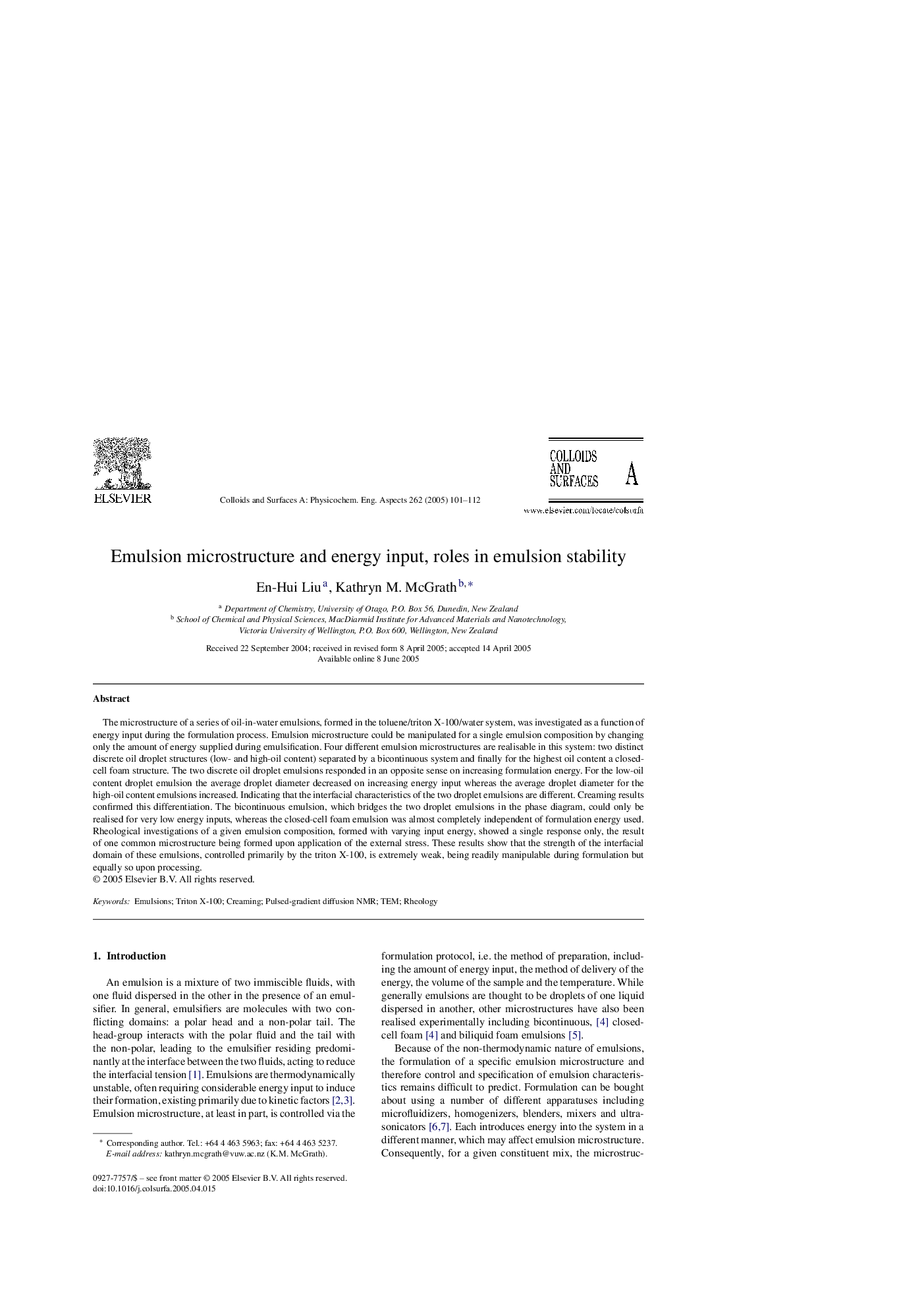| Article ID | Journal | Published Year | Pages | File Type |
|---|---|---|---|---|
| 9675809 | Colloids and Surfaces A: Physicochemical and Engineering Aspects | 2005 | 12 Pages |
Abstract
The microstructure of a series of oil-in-water emulsions, formed in the toluene/triton X-100/water system, was investigated as a function of energy input during the formulation process. Emulsion microstructure could be manipulated for a single emulsion composition by changing only the amount of energy supplied during emulsification. Four different emulsion microstructures are realisable in this system: two distinct discrete oil droplet structures (low- and high-oil content) separated by a bicontinuous system and finally for the highest oil content a closed-cell foam structure. The two discrete oil droplet emulsions responded in an opposite sense on increasing formulation energy. For the low-oil content droplet emulsion the average droplet diameter decreased on increasing energy input whereas the average droplet diameter for the high-oil content emulsions increased. Indicating that the interfacial characteristics of the two droplet emulsions are different. Creaming results confirmed this differentiation. The bicontinuous emulsion, which bridges the two droplet emulsions in the phase diagram, could only be realised for very low energy inputs, whereas the closed-cell foam emulsion was almost completely independent of formulation energy used. Rheological investigations of a given emulsion composition, formed with varying input energy, showed a single response only, the result of one common microstructure being formed upon application of the external stress. These results show that the strength of the interfacial domain of these emulsions, controlled primarily by the triton X-100, is extremely weak, being readily manipulable during formulation but equally so upon processing.
Related Topics
Physical Sciences and Engineering
Chemical Engineering
Colloid and Surface Chemistry
Authors
En-Hui Liu, Kathryn M. McGrath,
